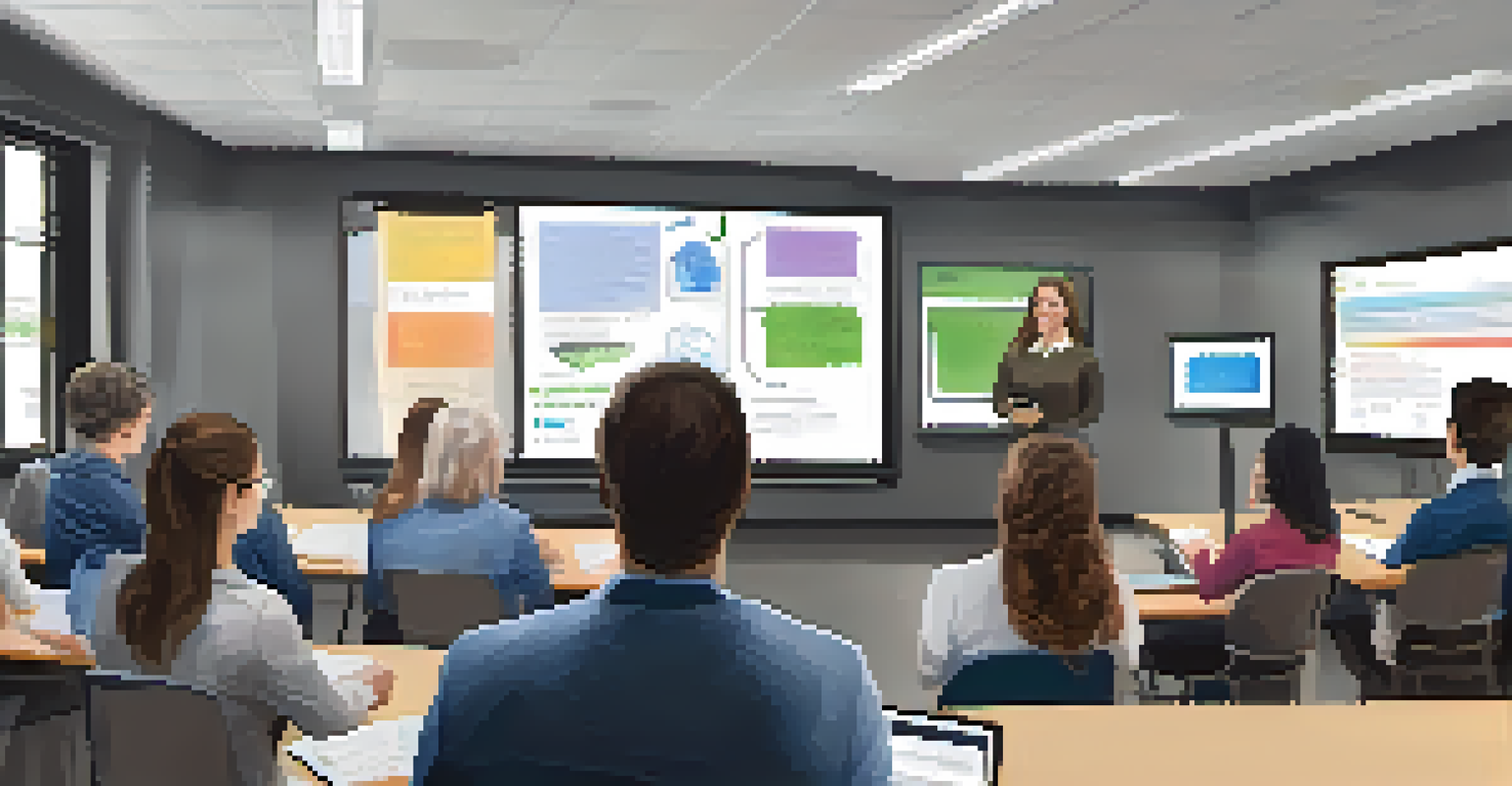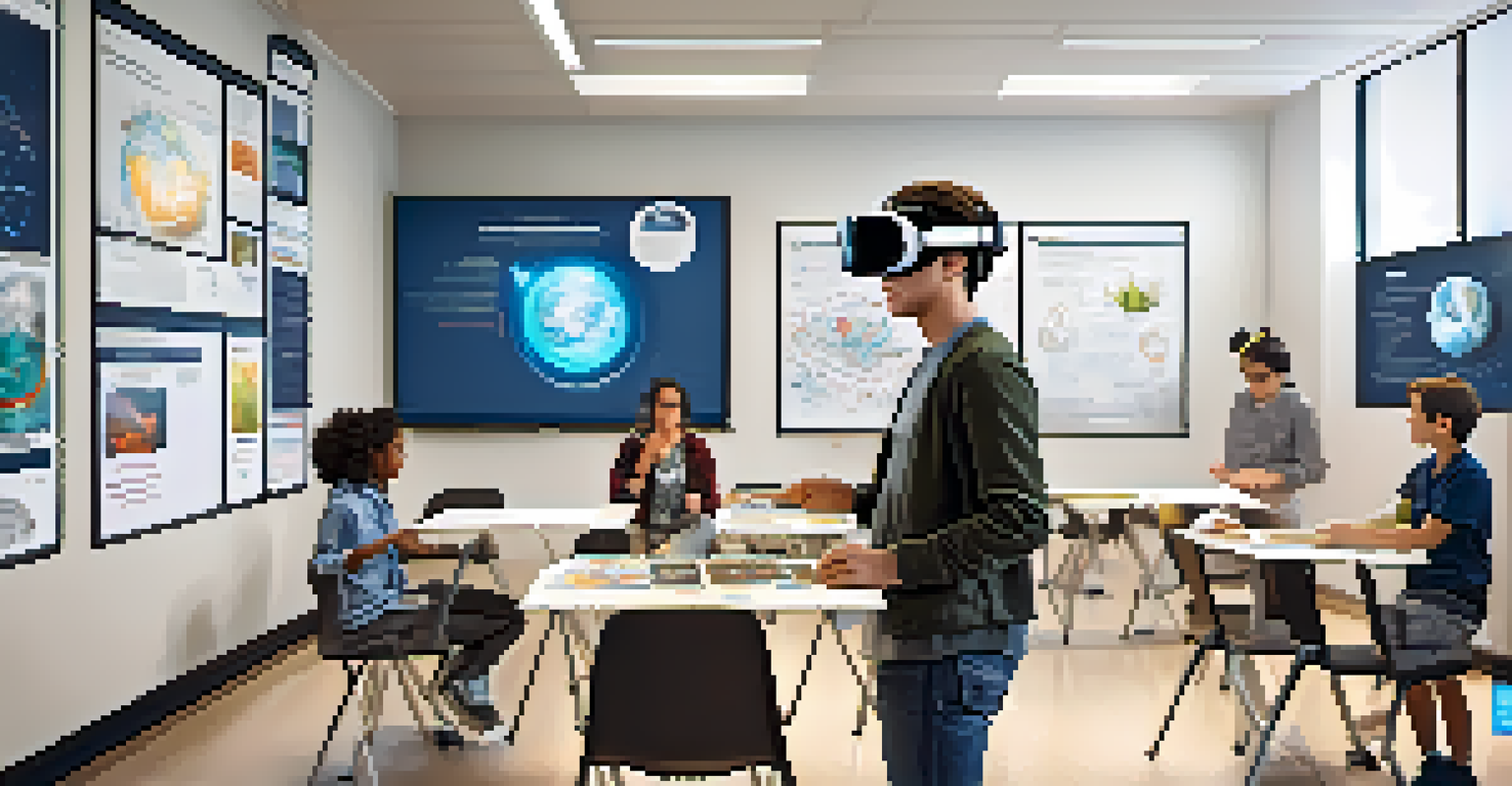Integrating Technology in Classrooms: A School-Tech Approach

Understanding the Importance of Technology in Education
In today's digital age, technology plays a pivotal role in shaping education. It enhances learning experiences and helps students engage with content more effectively. Just as calculators revolutionized math classes, today’s tools like tablets and interactive software offer new ways to grasp complex subjects.
Technology will not replace teachers, but teachers who use technology will replace those who do not.
Moreover, integrating technology can cater to different learning styles. For instance, visual learners benefit from videos and animations, while auditory learners thrive on podcasts and discussions. This personalized approach not only keeps students interested but also improves retention of information.
Ultimately, embracing technology in education isn’t just a trend; it's essential for preparing students for a tech-driven world. As they navigate digital tools in school, they develop skills that are vital for their future careers, making them more competitive in the job market.
Choosing the Right Tools for Your Classroom
Selecting the appropriate technology is crucial for effective integration. Educators should consider tools that align with their curriculum and learning objectives. For example, using Google Classroom can streamline assignments and foster collaboration among students.

Another essential factor is usability. Technology should be user-friendly for both teachers and students. If a tool is too complicated, it may create frustration rather than enhance learning. Simple interfaces often encourage more frequent use and engagement.
Tech Enhances Learning Experiences
Integrating technology in education caters to different learning styles and prepares students for a tech-driven future.
Additionally, budget constraints can influence technology choices. Schools should look for cost-effective options, such as open-source software or educational apps, that provide valuable resources without breaking the bank. Balancing quality with affordability can still lead to a successful tech integration.
Creating a Tech-Friendly Learning Environment
A successful tech integration requires the right environment. Classrooms should be equipped with reliable internet access and sufficient devices for students. This setup ensures that all learners have equal opportunities to engage with technology during lessons.
The real power of technology is not in the tools themselves, but in the way we use them to enhance learning.
Flexible seating arrangements can also enhance tech usage. For instance, mobile furniture allows students to work in groups or individually, promoting collaboration while utilizing devices. When students are comfortable, they are more likely to participate actively.
Moreover, fostering a culture of innovation is essential. Encouraging students to explore and experiment with technology can spark creativity and critical thinking. When they feel empowered to use tech tools, the learning experience becomes richer and more dynamic.
Training Teachers for Effective Tech Integration
Teacher training is a cornerstone of successful technology integration. Professional development programs should focus on how to incorporate tech tools effectively into lesson plans. This ensures that educators are not only comfortable with the technology but can also leverage it to enhance student learning.
Peer collaboration can be beneficial in this training process. Teachers sharing their experiences with technology can provide practical insights and tips. This community approach fosters a supportive environment where educators can learn from each other’s successes and challenges.
Effective Tools Require Training
Teacher training and ongoing support are essential for successful technology integration in the classroom.
Furthermore, ongoing support is crucial. Providing teachers with access to resources, tech support, and regular check-ins can help them navigate any difficulties. As they become more confident in using technology, their enthusiasm will translate to their students.
Engaging Students with Interactive Learning Tools
Interactive learning tools, such as simulations and educational games, can significantly boost student engagement. These tools make learning fun and allow students to apply concepts in real-world scenarios. For example, a chemistry simulation can let students experiment with reactions without the risks associated with a real lab.
Additionally, interactive tools often encourage collaboration. When students work together to solve problems or complete projects, they not only learn from each other but also develop teamwork skills. This collaborative aspect mirrors many workplace environments, preparing them for future challenges.
It’s important to incorporate a variety of interactive tools to cater to different interests. From coding platforms to virtual reality experiences, offering choices can keep students motivated and eager to learn. Engaged students are more likely to retain knowledge and develop a love for learning.
Assessing the Impact of Technology on Learning Outcomes
Regular assessment of technology's impact on learning is vital for continuous improvement. Educators should gather feedback from students on their experiences with tech tools. This can provide valuable insights into what works and what doesn’t in their teaching methods.
Quantitative data, such as test scores and project outcomes, can also help measure effectiveness. By comparing results from tech-integrated lessons to traditional methods, educators can identify trends and make informed decisions moving forward. This data-driven approach allows for adjustments and refinements.
Future Trends Shape Education
Emerging technologies like AI and personalized learning will continue to transform educational practices and student engagement.
Moreover, it’s essential to celebrate successes. Highlighting achievements and positive outcomes can motivate both teachers and students to embrace technology further. Recognizing progress reinforces the idea that integrating technology can enhance the learning experience.
Future Trends in Classroom Technology Integration
As technology continues to evolve, so will its role in education. Emerging trends, such as artificial intelligence and personalized learning algorithms, promise to enhance how we teach and learn. These innovations can tailor educational experiences to individual student needs, making learning more effective.
Moreover, the rise of remote and hybrid learning models has shifted the focus on integrating technology. Schools are now exploring how to maintain engagement and interaction in virtual classrooms. Tools that support collaboration and communication will remain at the forefront of educational technology.

Ultimately, staying informed about future trends is key for educators. Continuous learning about new technologies can empower teachers to adapt their strategies and remain relevant in an ever-changing landscape. Embracing these advancements will ensure that students receive the best possible education.